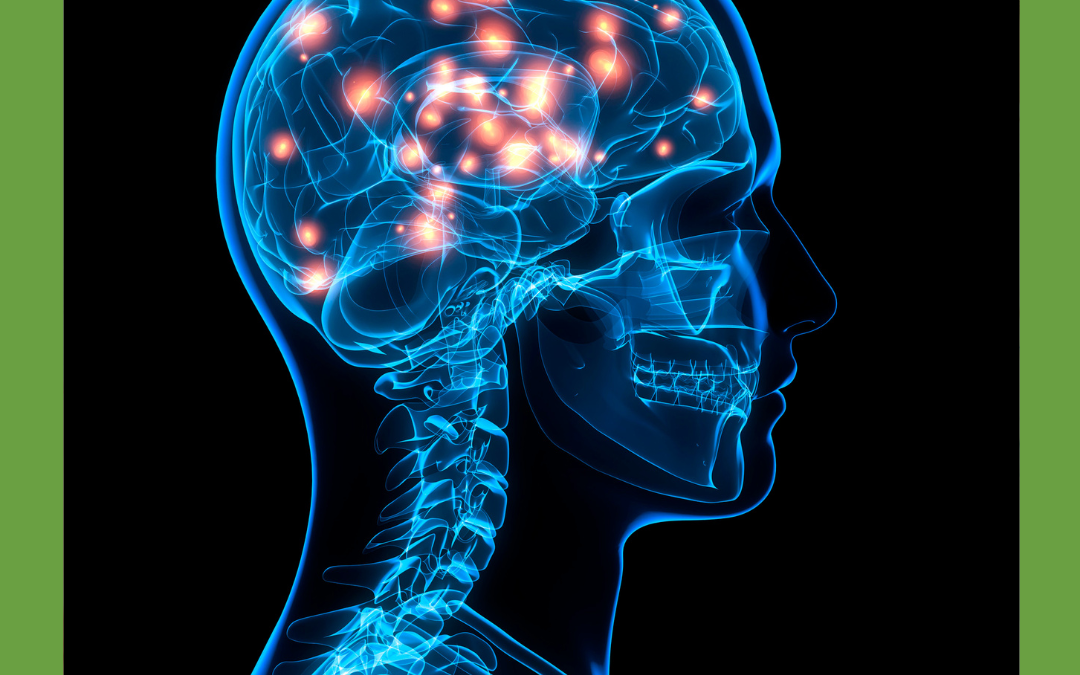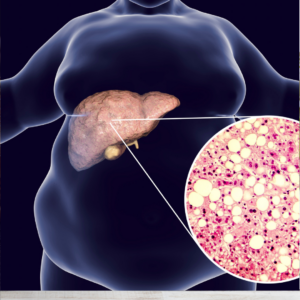
Mental Health and Emotional Wellness
In today’s fast-paced world, where the lines between work, family, and personal time often blur, setting
healthy boundaries has become more crucial than ever. This is especially true for parents and caregivers who are constantly navigating the needs of others while trying to maintain their own mental health and self-care routines.
Understanding Healthy Boundaries
Healthy boundaries are the invisible lines that define our personal space, both emotionally and physically. They help protect our well-being by delineating what is acceptable and unacceptable in our interactions. Setting these boundaries is a form of self-care that everyone should prioritize.

Why Healthy Boundaries Are Important
- Protects Mental Health: Establishing boundaries helps reduce stress and prevent burnout by ensuring that you are not overextending yourself. It allows you to focus on what truly matters without feeling overwhelmed.
- Enhances Relationships: Healthy boundaries foster respect and understanding in relationships. You cultivate mutual respect and stronger connections by clearly communicating your needs and limits.
- Supports Self-Care: Boundaries are a critical component of self-care, allowing you to allocate time and energy to activities that rejuvenate and fulfill you.
- Empowers Personal Growth: Setting boundaries encourages self-reflection and confidence, empowering you to take control of your life and make decisions that align with your values.

Steps to Setting Healthy Boundaries
- Self-Reflection
Begin by reflecting on your current boundaries or lack thereof. Consider areas where you often feel discomfort, resentment, or exhaustion. These feelings can signal the need for boundary-setting.
- Define Your Limits
Clearly identify what you need to protect your mental health and well-being. This could include time alone, saying no to additional responsibilities, or limiting specific interactions.
- Communicate Clearly
When discussing boundaries, use clear and assertive communication. Express your needs in a straightforward manner without apologizing or justifying them. For example, “I need some time to myself after work to unwind” is effective and respectful.

- Be Consistent
Consistency is vital when enforcing boundaries. Be firm yet empathetic when reminding others of your limits. Over time, people will learn to respect your space and needs.
- Practice Self-Care
Regularly check in with yourself to ensure that others respect your boundaries and that you honour your self-care commitments. Remember, boundaries are flexible and can be adjusted as your needs change.
- Seek Support
If you’re struggling to set boundaries, consider seeking support from mental health professionals or joining communities focusing on boundary-setting and self-care. Resources like Brené Brown’s workbooks and discussion guides can provide valuable insights and tools.

Conclusion
Setting healthy boundaries is essential for protecting your mental health and fostering relationships and personal growth. You empower yourself to lead a balanced and fulfilling life by prioritizing boundaries.
Ready to take the next step in your boundary-setting journey? Connect with like-minded individuals in our community or explore resources that can help you refine this crucial skill. Remember, setting boundaries is an act of self-love and empowerment.

Mental Health and Emotional Wellness
Many individuals explore various methods to achieve personal growth and fulfillment in today’s fast-paced world. Among these, hypnotherapy is gaining popularity as a powerful tool for manifestation—a process of bringing your desires and aspirations into reality. Understanding how hypnotherapy can aid manifestation might be your next step toward creating the life you want.
Understanding Hypnotherapy and Manifestation
What is Hypnotherapy?
Hypnotherapy is a form of talk therapy that involves guided relaxation and focused attention to achieve a heightened state of awareness. During this state, individuals are more open to suggestions, making it an effective method for addressing subconscious beliefs and patterns hindering personal growth.

What is Manifestation?
Manifestation is bringing something tangible into your life through attraction and belief. It’s about aligning your thoughts, feelings, and actions to bring positive changes and fulfill your desires. Often, manifestation incorporates positive affirmations and visualization techniques to amplify its effects.
How Hypnotherapy Enhances Manifestation
- Breaking Down Mental Barriers
One of the primary ways hypnotherapy aids manifesting the life you want, is by breaking down mental barriers. Often, subconscious blocks—such as limiting beliefs or negative thought patterns—can hinder your ability to manifest your goals. These barriers can be identified and reprogrammed through hypnotherapy, allowing for a clearer path to manifesting your desires.
- Reinforcing Positive Affirmations
Positive affirmations are a key component of manifestation. They help shift your mindset toward positivity and possibility. A hypnotherapist can help you reinforce these affirmations more deeply, reaching the subconscious mind where lasting change occurs. This reinforcement helps solidify new, empowering beliefs that support your manifestation goals.

- Visualizing Success
Visualization is another powerful tool in the process. It involves creating vivid mental images of your desired outcome. During hypnotherapy, visualization exercises can help you to experience the feelings and sensations associated with achieving your goals. This practice boosts confidence and increases motivation to take action toward those goals.
- Aligning Subconscious and Conscious Mind
For manifestation to be effective, your conscious desires must align with your subconscious beliefs. Hypnotherapy facilitates this alignment by bringing subconscious thoughts to the surface and addressing conflicts between the two. Once aligned, your intentions become more powerful, paving the way for successfully manifesting your dreams.

Getting Started with Hypnotherapy for Manifestation
Many individuals have reported tangible results from using hypnotherapy for manifesting their goals. The potential benefits are vast, from career advancements to improved relationships and financial success. By committing to regular hypnotherapy sessions and incorporating manifestation techniques into daily life, many find themselves closer to realizing their dreams.
If you’re interested in exploring hypnotherapy as a tool to manifest the life you want, consider the following steps:
- Research Qualified Practitioners: Look for certified hypnotherapists with experience in manifestation techniques.
- Set Clear Intentions: Define what you want to manifest and keep these intentions clear and specific.
- Commit to Regular Sessions: Consistency is vital. Regular hypnotherapy sessions can reinforce positive changes and keep you on track.
- Practice Daily Affirmations and Visualization: Incorporate these practices into your routine to support the work done in hypnotherapy.
Conclusion
Hypnotherapy offers a unique and practical approach to manifestation, empowering you to overcome subconscious blocks and align your mind with your deepest desires. By integrating hypnotherapy into your personal development journey, you can enhance your ability to manifest the life you truly want. Ready to take the next step? Explore hypnotherapy for manifestation today and unlock your full potential.
Written by DeVera Nybo, Owner, Newleaf Total Wellness Centre

Mental Health and Emotional Wellness
People often misinterpret perfectionism as striving to be the best, but it is more complex. Brene Brown describes it as believing that achieving perfection in our actions, appearance, and life can protect us from criticism, blame, and shame. Despite its promise of protection, perfectionism often results in stress, anxiety, and self-doubt.
Defining Perfectionism
Perfectionism extends beyond high standards to an all-or-nothing mindset where falling short of flawless is unacceptable. This mentality can affect various life areas, such as work and relationships, leading to dissatisfaction and a fear of failure. Trying to be perfect is not self-improvement. Perfectionism is, at its core, about trying to earn approval. Brown also warns, “Perfect and bulletproof are seductive, but they don’t exist in the human experience.” Acknowledging this is the first step toward overcoming perfectionism.

The Dangers of Perfectionism
While pursuing excellence can fuel success, trying to be perfect can be crippling, often leading to:
- Procrastination: The fear of falling short of perfection can delay the initiation or completion of tasks.
- Mental Health Issues: Persistent self-criticism and fear of judgment contribute to anxiety, depression, and feelings of inadequacy.
- Relationship Strain: Expectations can extend to others, causing frustration and conflict.
- Decreased Productivity: Focusing excessively on details can impede task completion and stifle creativity.
- Shame: Perfectionism is shame avoidance. Shame is a universally uncomfortable emotion that creates fear that we are unworthy of connection. However, because perfection is unattainable, shame ultimately follows us on our quest for perfection.

Identifying Perfectionism
Recognizing signs of perfectionism is essential. If you frequently struggle to meet your own standards, feel anxious or frustrated trying to fulfill them, or hear that your standards are too high, perfectionistic tendencies might be the issue.
Reflective Questions:
- Do I find it difficult to meet my standards?
- Am I often anxious or frustrated in trying to meet them?
- Have others remarked that my standards are excessively high?
- Do my standards prevent me from completing tasks or enjoying life?
- Am I critical of others who fail to meet my high expectations?
- Do I have different expectations for myself than I do for others?

Examples of Perfectionist Thoughts and Behaviors
Perfectionist Feelings:
- Feeling anxious or depressed when unable to meet self-imposed expectations.
- Engaging in constant self-criticism despite putting in effort and time.
- Feeling ashamed or uncomfortable with compliments.
Perfectionist Thinking:
- Black-and-white thinking: Viewing anything less than perfect as a failure.
- Catastrophic thinking: Assuming the worst will happen if you make a mistake.
- Should Statements: Believing you must always be perfect and never show weakness.
Perfectionist Behavior:
- Chronic procrastination or giving up when tasks aren’t perfect.
- Excessive checking for errors or unnecessarily redoing work.
- Avoiding new experiences to prevent mistakes.

Strategies to Overcome Perfectionism
a) Realistic Thinking vs Perfectionism
Replace negative, self-critical thoughts with realistic, positive affirmations. Consistent practice can foster new thought patterns.
Examples:
“Nobody is perfect!”
“All I can do is my best!”
“Making a mistake is human.”
b) Perspective Taking
Challenge distorted perspectives by considering others’ viewpoints. Ask yourself:
- How would a friend see this situation?
- Are there alternative perspectives?
c) Consider the Big Picture
Redirect your focus from details to broader perspectives by asking:
- What’s the worst that could happen?
d) Compromising vs Perfectionism
Establish flexible, realistic standards and be open to compromise.

Moving Forward
Overcoming perfectionism involves accepting imperfections and valuing progress over flawlessness, not lowering your standards. By practicing these strategies and acknowledging perfection’s unrealistic nature, you can lead a more fulfilled, balanced life.
If you’re ready to address your perfectionism further, consider professional guidance. Engage with mental health professionals, join support groups, or read insightful books to support your self-improvement. While perfection may be an illusion, growth and happiness are attainable.
Written by: DeVera Nybo, Owner, Newleaf Total Wellness Centre

Healthy Habits & Lifestyle
Have you ever found yourself saying, “I’m so tired.” even after a full night’s sleep? You’re not alone. Many adults struggle with feeling refreshed upon waking, and the reasons can be as multifaceted as they are frustrating.
Understanding the complexities of sleep can seem daunting, but rest assured—it’s not impossible. Let’s unravel why you might not feel rested and how you can harness the power of routines to transform your night into a more restful experience.
The Sleep Deprivation Cycle
Sleep deprivation is more common than we think. According to the CDC, 1 in 3 adults don’t get enough. But what causes this cycle of tiredness even when we believe we’re getting enough shut-eye?

-
Sleep Disorder Suspects
Conditions like sleep apnea or insomnia might be the culprits. Sleep apnea disrupts breathing, causing interruptions throughout the night, while insomnia prevents you from falling or staying asleep. Both can leave you exhausted despite spending 7-8 hours in bed.
-
Poor Sleep Hygiene
Good sleep hygiene—habits and practices that promote consistent, uninterrupted slumber—is crucial. If your nightly routine includes late-night caffeine, irregular schedules, or blue light exposure before bed (yes, your phone or the TV), these habits might sabotage your restful night.

-
Stress and Mental Health
Mental health significantly impacts the quality of a good night’s rest. Anxiety and stress can keep your mind active, making it difficult to relax and drift into deep sleep phases essential for feeling rested.
How to Achieve Restful Sleep
With the right strategies, you can improve your chances of waking up refreshed. Here’s how:
-
Revamp Your Sleep Hygiene
- Consistent Schedule: Go to bed and wake up at the same time every day, even on weekends. Consistency helps regulate your body’s internal clock.
- Create a Bedtime Routine: Engage in relaxing activities like reading or listening to music before bed. Avoid screens at least an hour before you retire for the night.
- Optimize Your Environment: Ensure your bedroom is dark, quiet, and cool. Consider blackout curtains and white noise machines if needed.

-
Evaluate Your Sleep Quality
Monitor your sleep patterns using apps or sleep trackers. They can provide insights into how often you wake up during the night or the length of your sleep cycles.
-
Address Physical and Mental Health
Consult with a healthcare professional if you suspect a disorder or if stress and anxiety are affecting your ability to get a good night’s rest. Treatment options and therapy can make a significant difference.
-
Diet and Exercise
Maintain a balanced diet and regular exercise regimen. Both can enhance sleep quality. However, avoid heavy meals and vigorous activity close to bedtime.

Conclusion
Feeling perpetually tired can be disheartening, but understanding the root causes and adopting healthier habits can help you reclaim restful nights. Prioritize your sleep hygiene and consider professional advice if necessary.
Remember, a well-rested you is a more productive, happier you. Take the first step towards transforming your life today!
For more tips on healthier lifestyles, subscribe to our blog posts and join our community of health enthusiasts committed to wellness and self-care.

Chronic Conditions & Holistic Health
Feeling nauseous can be an uncomfortable and disruptive experience. Many health-conscious individuals seek to understand the underlying causes and solutions for this common problem. In this blog post, we’ll explore the various factors that can lead to nausea, its physiology, management strategies, diagnostic processes for chronic nausea, and holistic treatments that can offer relief.

What Causes Nausea?
Various factors can trigger nausea, ranging from benign to more serious health conditions. Common causes include:
- Gastrointestinal Issues: Conditions such as gastroenteritis, food poisoning, and acid reflux can one lead to feeling nauseated.
- Motion Sickness: Traveling by car, plane, or boat can trigger upset stomach and vomiting in susceptible individuals.
- Pregnancy: Morning sickness is a well-known cause of nausea during pregnancy.
- Medication Side Effects: Certain medications, such as chemotherapy drugs, can induce nausea as a side effect.
- Stress and Anxiety: Emotional stress and anxiety can manifest physically as queasiness.
- Food Sensitivities: Food intolerances and allergies can cause stomach upset after consuming trigger foods.
The Physiology Behind Nausea
Feeling nauseous is a complex physiological response that involves multiple body systems. It begins in the brain, specifically the area known as the vomiting center, which receives input from various sensory organs such as the inner ear and stomach. This triggers a series of events, including increased heart rate, changes in blood flow, and contraction of abdominal muscles, resulting in the sensation of queasiness sometimes leading to vomiting.

Managing Nausea
Managing nausea involves addressing both the symptoms and the underlying cause. Here are some strategies that can help:
- Dietary Changes: Avoiding trigger foods or following an anti-inflammatory diet can help. Eating smaller, more frequent meals and avoiding spicy or greasy foods can reduce nausea.
- Hydration: Staying hydrated helps flush out toxins and can alleviate symptoms.
- Ginger and Peppermint: Research has shown that natural remedies like ginger tea or peppermint oil can reduce queasiness.
- Medication: Over-the-counter antiemetic medications can provide temporary relief in acute cases.
- Mindfulness and Relaxation Techniques: Reducing stress through mindfulness and relaxation exercises can help manage anxiety-related nausea.

How is Chronic Nausea Diagnosed?
When nausea becomes chronic, a thorough evaluation by a healthcare professional is essential. According to the Mayo Clinic, effective treatment relies on accurate diagnosis. The diagnostic process may include:
- Medical History Review: Understanding the patient’s medical history and current medications.
- Physical Examination: A comprehensive physical examination to identify potential underlying conditions.
- Diagnostic Tests: Doctors may conduct blood tests, imaging, and endoscopy to rule out specific causes.
A precise diagnosis can significantly improve treatment outcomes, offering targeted solutions to manage chronic nausea.

Holistic Treatments for Chronic Nausea
Holistic approaches can complement traditional medical treatments, providing a comprehensive strategy for managing chronic nausea. These include:
- Acupuncture: This ancient practice can help balance energy flow and reduce symptoms.
- Herbal Remedies: Herbs like chamomile and fennel are known for their soothing properties.
- Dietary Counseling: Working with a nutritionist to create a tailored diet plan can support overall wellness and reduce nausea.
At Newleaf Total Wellness Centre, we believe in a patient-centred approach that integrates interdisciplinary care to achieve optimal health outcomes. Our team of professionals is dedicated to supporting your journey to feeling stronger, braver, and better.

Conclusion
Understanding the causes and physiology of nausea is the first step in finding effective relief. Individuals can take proactive steps toward better health by exploring various management strategies, diagnostic processes, and holistic treatments. Consider partnering with a healthcare provider who values evidence-informed, patient-centred care for personalized support.
If you’re experiencing chronic nausea and would like to explore holistic treatment options, contact Newleaf Total Wellness Centre. Our team of experts is here to partner with you on your path to wellness.
Written by: DeVera Nybo, MBA, CEO / Owner Newleaf Total Wellness Centre

Mental Health and Emotional Wellness
Hard emotions can feel like a storm that appears out of nowhere. One minute, you’re going about your day, and the next, you’re overwhelmed by feelings of anger, sadness, or anxiety. While pushing them away is tempting, the key to emotional wellness is acknowledging and processing these emotions. Let’s explore how to approach these feelings with compassion and understanding so they can pass without leaving a lasting impact.
1. Engage with Your Feelings
The first step in managing hard emotions is to engage with them fully. This doesn’t mean letting them take over your life but acknowledging their presence. You create a space where healing can begin by allowing yourself to feel without judgment. Remember, emotions are transient—they will pass.

2. Get Curious About the Story
Every emotion has a story. When a feeling arises, instead of immediately reacting, pause and ask yourself, “What is this about?” Understanding the origin of your emotions can provide valuable insights into your triggers and patterns.
3. Write it Down
Journaling is a powerful tool for processing emotions. Write down your feelings and why you think you’re feeling that way. This practice helps clarify your thoughts and allows you to see your feelings from a different perspective.

4. Dig In
- What Are the Facts, and What Are My Assumptions?
Separate facts from assumptions. Often, our emotions are tied to stories we’ve created in our minds. By identifying the truth, you can reduce the intensity of your emotional response.
- What Do I Need to Know About the Others Involved?
Consider the role of others in your emotional landscape. Understanding their perspectives may shift your view and help alleviate some of the feelings you’re experiencing.
- What Am I Really Feeling? What Part Did I Play?
Dig deeper into your emotions. Are you truly angry, or is there underlying sadness or fear? Recognizing the source of your feelings can be liberating. Reflect on your actions and consider how they may have affected the situation.
5. Regulate, Don’t Suppress
Emotion regulation is about managing your feelings, not suppressing them. Techniques such as deep breathing, meditation, and physical activity can help you stabilize your mood. These practices enable you to respond to emotions healthily and productively.

6. Work with a Helping Professional
If your emotions feel overwhelming and difficult to manage on your own, consider seeking support from a professional. Therapists and counsellors can provide a safe space to explore your feelings and develop effective strategies for dealing with them.
In conclusion, remember that hard emotions are part of being human. They do not define you, nor do they have to control your life. By adopting a mindful approach to your feelings, you’ll find they pass quickly, making you stronger and more resilient. If you’re ready to take the next step towards emotional wellness, consider booking an appointment with a helping professional who can help guide you.
Written by: DeVera Nybo, MBA, CEO/ Owner Newleaf Total Wellness Centre

Injury Rehab and Prevention
What is a Traumatic Brain Injury?
Traumatic Brain Injury (TBI) is a complex injury with a broad spectrum of symptoms and disabilities. It occurs when an external force injures the brain, potentially causing long-term complications or death. TBIs can result from various incidents, such as falls, vehicle accidents, sports injuries, or violent assaults. They can range from mild concussions to severe injuries that leave lasting physical and cognitive impairments. The symptoms and effects of a TBI can vary widely, depending on the extent and location of the injury, as well as the individual’s health and age. Understanding the nature of TBIs is essential for recognizing their profound impact on individuals’ lives and navigating the path toward recovery.

What Do People with Traumatic Brain Injury Struggle with in Everyday Life?
The challenges faced by individuals with TBI are multifaceted, affecting virtually every aspect of daily living. These struggles often include:
Cognitive Difficulties
- Memory Loss: Short-term memory issues are prevalent, making remembering recent events or tasks hard.
- Attention and Concentration: Sustaining attention on tasks can be difficult, affecting work and personal life.
- Executive Functioning: Planning, organizing, judgement, and problem-solving abilities may be impaired.

Physical Symptoms
- Headaches and Fatigue: Persistent headaches and constant fatigue are frequent complaints.
- Motor Skills: Coordination and balance may be compromised, leading to difficulties with movement and daily activities.
- Sensory Changes: Sensitivity to light, sound, and touch can increase alongside potential changes in vision and hearing.
Emotional and Behavioral Changes
- Mood Swings: Individuals may experience rapid shifts in mood, including irritability, depression, and anxiety.
- Behavioural Issues: Impulsivity and difficulty controlling emotions can lead to behavioural problems.
- Social Interaction: Forming and maintaining relationships may become more challenging due to the abovementioned symptoms.
Communication Issues
- Difficulty in Speech and Language: Finding the right words can complicate social interactions, making it hard for survivors to express their needs and emotions effectively.
- Cognitive Impairments: The ability to understand and process information may be affected, further exacerbating communication issues.
- Emotional Regulation Problems: Frustration and anxiety make it even more challenging for TBI survivors to engage in meaningful conversations.
Understanding these struggles underscores the necessity of comprehensive and personalized treatment plans to address the unique needs of TBI survivors.

Therapies and Treatments for Traumatic Brain Injury
Advancements in medical science and innovative therapeutic approaches offer new hope for individuals with Traumatic Brain Injury (TBI). Below is a comprehensive list of therapies and treatments that can significantly contribute to the recovery process:
Physical Therapy
Through tailored exercise regimens, Physical therapy enhances strength, coordination, and mobility. This approach helps individuals regain their independence and equips them to perform daily activities more efficiently. The focus is on improving motor skills, balance, and physical function, which are crucial for overall recovery.
Occupational Therapy
Occupational therapy aims to improve the ability to perform everyday tasks by developing adaptive strategies and utilizing specialized equipment. This therapy enhances fine motor skills, cognitive functioning, and sensory integration. The OT may suggest home and work environment modifications to support increased functionality and independence.

Speech and Language Therapy
In addressing communication difficulties, speech and language therapy aims to improve speech clarity, comprehension, and expressive abilities. Techniques may include exercises to strengthen the muscles used in speech, strategies to improve listening and understanding, and tools to aid in articulating thoughts. This therapy is vital for restoring effective communication skills.
Cognitive Rehabilitation for Traumatic Brain Injury
Cognitive rehabilitation focuses on retraining the brain through structured exercises to improve memory, attention, problem-solving skills, and executive functioning. This therapy may include tasks such as puzzles, memory games, and computer-based cognitive training to enhance mental agility and cognitive performance.
Psychotherapy
Psychotherapy addresses the emotional and psychological impacts of TBI. Through counselling, cognitive-behavioral therapy, and other modalities, individuals receive support to manage mood disorders such as depression and anxiety. Psychotherapy plays a critical role in fostering mental well-being and providing coping strategies for dealing with the challenges posed by TBI.

Medication
Medication can be an essential component in managing symptoms associated with TBI, including pain, spasticity, depression, and anxiety. A carefully managed medication regimen can enhance the overall stability of the recovery process, making symptoms more manageable and improving the quality of life for individuals with TBI.
Emerging Treatments for Traumatic Brain Injury
Ongoing research continues to pave the way for innovative treatments. Promising therapies such as hyperbaric oxygen therapy, stem cell therapy, and neurofeedback are showing potential in aiding recovery and improving outcomes for TBI survivors. These emerging treatments offer exciting prospects for future advancements in TBI care.
By integrating these therapies and treatments, individuals with TBI can experience a more comprehensive and effective recovery journey. Each therapy plays a unique role in addressing the multifaceted challenges of TBI, contributing to improved quality of life and enhanced functional abilities.
Do People with a Traumatic Brain Injury Ever Return to “Normal”?
The question of whether individuals with a TBI can return to their pre-injury state is complex and varies from person to person. Recovery depends on several factors, including the severity of the injury, the quality of medical care, and the support system surrounding the individual. While some people may experience significant recovery and resume their previous lifestyle, others may have to adjust to new limitations and find a “new normal.” It’s essential to understand that recovery is often a long-term process that requires patience, persistence, and comprehensive care.

Hope & Commitment: Key Components of Recovery
Recovery from TBI is often a long and arduous journey, but hope and commitment are vital components that can drive progress. Maintaining a positive outlook and staying committed to a personalized treatment plan can make a significant difference. Celebrating small victories and remaining resilient in the face of setbacks is essential.
In addition, support from family, friends, and healthcare professionals plays a crucial role in fostering a conducive environment for recovery. Emotional support, practical assistance, and encouragement can empower individuals with TBI to persevere and achieve their rehabilitation goals.
Conclusion
Traumatic Brain Injuries are life-altering. Living with a TBI presents numerous challenges, but with the right therapies and unwavering commitment, recovery and a fulfilling life are within reach. The advancements in treatment options provide a beacon of hope, illuminating the way toward improved quality of life and greater independence for TBI survivors.
Empowering yourself with knowledge about these therapies and staying connected with a supportive community can make all the difference. Remember, every step forward, no matter how small is a victory on the path to recovery.
If you or someone you know is dealing with a TBI, reach out to Newleaf Total Wellness Centre or other support networks to explore the best possible paths to recovery.
Written by: DeVera Nybo, MBA, Owner, Newleaf Total Wellness Centre

Women's and Children's Health
Belly fat is more than just a nuisance that makes your clothes feel tight. It’s a concern for many women, leading to moments of frustration and decreased self-esteem and also posing significant health risks. Understanding the root causes of belly fat and the strategies for managing it goes beyond the quest for a slimmer waistline—it’s about making informed choices for your overall health and wellness.
In the sea of fitness trends and weight loss myths, the truth about belly fat in women often gets distorted, leaving many confused and disheartened. It’s time to clear the air and uncover the facts, empowering women with the knowledge to take control of their health and body image in a compassionate and informed way.

What Causes Belly Fat?
Belly fat, a common concern among women, can feel like a stubborn puzzle. But what really contributes to its accumulation? Understanding the factors can empower you to make informed choices toward a healthier lifestyle.
- Dietary Habits: It’s no secret that what we eat significantly impacts our body shape. A diet laden with processed items, excessive sugars, and unhealthy fats is a fast track to gaining unwanted weight, particularly around the midsection.
- The Age Factor: Aging is an inevitable part of life, bringing hormonal shifts that slow down metabolism and favour fat storage around the abdomen. This is notably evident during and post-menopause, marking a challenging phase for many in managing waistline expansion.
- Post-Pregnancy Changes: The joy of motherhood often comes with a lingering souvenir — belly fat. Shedding the pregnancy pounds can be challenging, particularly in the stubborn abdominal area.
- Activity Levels: Our modern sedentary lifestyle contributes to belly fat. Incorporating regular exercise is essential in dodging weight gain and promoting overall health.
- Stress: Have you ever noticed snack cravings when you’re stressed? There’s a reason. High stress triggers cortisol production, a hormone that increases appetite and directs fat storage to the abdominal area.
- Genetic Blueprint: Just as we inherit eye colour or height from our parents, genetics also determine our body’s predisposition to fat storage patterns, including that pesky belly fat.
- Hormonal Shifts: Beyond aging, hormonal changes across a woman’s life, particularly during menopause, rearrange fat distribution, often relocating it to the belly.
Understanding the multifaceted reasons behind belly fat can guide you toward healthier choices. Remember, every step towards a balanced diet, active lifestyle, and stress reduction helps manage belly fat and enhances your overall well-being.

What Type of Fat Is It?
Not all belly fat is created equal. The fat lying directly under the skin, known as subcutaneous fat, is what you can pinch. In contrast, visceral fat takes a more hidden approach. It nestles behind your abdominal muscles and envelops your vital organs. While both types can be concerning, visceral fat poses a greater health risk, contributing to cardiovascular disease, diabetes, and other conditions.
The Dangers of Visceral Fat
Visceral fat is metabolically active and can significantly impact your health by releasing inflammatory markers and hormones that influence blood sugar levels and cholesterol. This hidden fat is a silent predator with risks that extend far beyond the waistline.
Is it even fat?
Not all round bellies are fat; bloating can also affect the size of your waistline. Identifying food sensitivities and adjusting your diet can help reduce bloating and internal inflammation, giving a more accurate picture of your body’s fat composition.

How to Get Rid of Belly Fat
Reducing belly fat might seem daunting, but adopting specific lifestyle changes can make a significant difference. While there’s no one-size-fits-all solution to losing belly fat, there are strategies to help reduce it:
Fads and Fiction
Beware of quick fixes like diet pills, body wraps, and extreme fasting regimes. These offer fleeting results at best and are dangerous at worst. The myth of spot reduction, or losing fat from a specific body part, lacks any scientific backing and also falls into this category.

The Facts about Losing Belly Fat
A comprehensive strategy encompassing diet, exercise, sleep, and stress management holds the key to trimming belly fat:
- Nutrition: Focus on whole, unprocessed foods like vegetables, fruits, lean proteins, and grains. Minimize sugar and processed items.
- Exercise: A mix of cardio and strength training can significantly reduce visceral fat, enhancing overall wellness.
- Sleep: A consistent sleep pattern is essential for hormonal equilibrium and crucial in weight management. Quality sleep is a pillar of weight management; aim for 7-9 hours nightly.
- Stress Management: Adopting meditation, deep breathing, or yoga practices can effectively keep stress and cortisol at bay.
- Pinpoint Bloating Triggers: Understand what leads to bloating—fizzy drinks, alcohol, certain foods, or high salt intake. Avoiding these can noticeably slim down your midsection.
Fads often promise much but deliver little, leading to harmful cycles of yo-yo dieting. Fiction suggests targeted fat loss is possible, a notion debunked by science. Fact tells us that a holistic route—balancing nutrition, activity, rest, and stress relief—is the most effective path to reducing belly fat.

The Surprising Influence of Oxytocin on Belly Fat
Intriguing research highlights another ally in the fight against belly fat: orgasms. They trigger oxytocin release, the so-called love hormone, which helps reduce carb cravings and alleviate stress by lowering cortisol levels. Beyond its stress-busting capabilities, oxytocin can also aid in lowering blood pressure and enhancing digestion, attacking belly fat from multiple angles.
The Best Advice
Ultimately, the best advice for managing belly fat—and overall health—is to live life fully. Enjoy nutritious foods, stay active, cultivate love and laughter, connect with others, and practice self-love and acceptance. Your body changes at various life stages, such as puberty, motherhood, and menopause, as well as through life events like illness and aging. Learning to love and accept your body through all its transformations is perhaps the most vital step in your health and wellness journey.
Remember, belly fat is a common issue that many women face, but it doesn’t define your worth or beauty. Understanding its causes and taking actionable steps toward a healthier lifestyle can improve your well-being and foster a positive relationship with your body.

Body Image and Mental Health
The pursuit of an “ideal” body can lead to a host of mental health issues, including anxiety, depression, and body dysmorphic disorder. It’s essential to remember that health comes in all sizes and shapes. You are more than your appearance; you are strong, capable, and deserving of respect and love, just as you are. It’s not about achieving the perfect body but nurturing a healthy one.
If you, or someone you know is struggling with weight or body image issues, book a consultation with one of our nutritionists and start a healing journey toward total wellness.
Written by: DeVera Nybo, MBA, Owner, Newleaf Total Wellness Centre

Conditions We Treat
Chronic pain—a phrase that millions of people across the globe know all too well. Chronic pain is not just a symptom. It’s a constant companion that affects every aspect of life. But what if there were ways to manage and potentially reduce this pain? What if you could address root causes instead of masking pain with medication? This blog post will explore the nature of chronic pain, its causes, and holistic approaches to treatment that go beyond traditional medicine.

Understanding Chronic Pain
Chronic pain is pain that persists for more than three months, often despite medication or treatment. It can stem from various conditions, including arthritis, back problems, migraines, or countless other health issues. Unlike acute pain—a body’s method of signalling harm—chronic pain can linger long after the injury has healed. Chronic pain hints at the complex interplay between the body and the brain.
The Terrible Triad: Suffering, Sleeplessness, Sadness
Chronic pain often brings along unwelcome companions—suffering, sleeplessness, and sadness, forming a ‘terrible triad‘. This triad creates a vicious cycle where pain worsens sleeplessness and sadness, which in turn can increase the perception of pain. Understanding this interconnection is crucial in managing chronic pain effectively.

The Brain’s Role in Chronic Pain
The brain plays a pivotal role in the perception and variation of pain. It acts as the central processing unit where pain signals are interpreted and experienced. Far from being a simple response to physical injury, pain involves complex exchanges between neural pathways. When an injured part of the body pain sends a pain signal, it travels through the nervous system to the brain. Here, the thalamus, cortex, and limbic system, analyze the signal, and process pain’s emotional and cognitive aspects.
This means that your emotional state, cultural background, and earlier experiences can significantly influence how you feel and manage pain. Furthermore, the brain can lessen the perception of pain by releasing natural painkillers, such as endorphins. The brain plays a critical role in the perception of pain and the body’s ability to suppress it. Understanding the brain’s role in pain perception opens avenues for new pain management strategies. Incorporating strategies that target neural systems, offers hope for chronic pain sufferers.
Seeking Natural Relief for Chronic Pain
For those who have been through the wringer of medical treatments and are wary of the side effects of traditional pain medications, there’s hope in natural therapies. These treatments aim to relieve pain and restore overall well-being.
Physiotherapy
Physiotherapy offers a pathway to improved quality of life through expert-led, personalized treatment plans. This science-backed approach addresses the discomfort and dives into the root causes of chronic pain. By integrating various techniques, from manual therapy to tailored exercise programs and education on body mechanics, physiotherapy empowers individuals with the tools they need to manage their pain effectively. It’s about more than symptom relief; it’s about fostering a partnership between patient and therapist to build a foundation for a more active and pain-free lifestyle. Through an empathetic and educational lens, physiotherapy helps patients understand their body and take proactive steps towards health.

Chiropractic Care
Chiropractic care is both holistic and non-invasive. At the heart of this practice is a profound understanding of the body’s intricate systems and how they can be harmonized for health. Chiropractic treatments can alleviate pain by improving the functional mobility of the joints and spine, reducing nerve irritation. This method addresses the symptoms and targets the underlying issues, fostering a healing environment within the body. If you need a break from the relentless grip of chronic pain, chiropractic care offers a promise. Chiropractors help patients reclaim control over their well-being, emphasizing the body’s innate ability for self-healing and resilience.
Acupuncture
Acupuncture involves the insertion of ultra-thin needles into specific points on the body. Researchers believe this technique stimulates the nervous system and activates the release of the body’s natural painkillers. For many sufferers of chronic conditions, such as arthritis, back pain, and migraines, acupuncture offers a pathway to relief without the reliance on pharmaceuticals. By engaging the body’s healing mechanisms, acupuncture reduces pain and improves overall well-being. It’s a testament to the power of integrating traditional healing practices with modern medical understanding, empowering individuals to explore alternative, non-invasive options for pain management.

Manual Osteopathy
Manual Osteopathy is a hands-on approach to healthcare emphasizes the body’s innate ability to heal, focusing on restoring balance and promoting overall wellness. Practitioners engage with the body’s structure and function to alleviate pain and enhance mobility. This method addresses the symptoms and dives deep to find and treat the root causes of pain. By adopting a holistic perspective, osteopathy empowers individuals, offering them a pathway to reclaim their quality of life without relying solely on medication.
Naturopathic Medicine
Naturopathic doctors are playing an increasingly pivotal role in the lives of those suffering from chronic pain, where traditional medicine often reaches its limits. By considering the entire individual—physically, emotionally, and mentally—naturopathy seeks to ease symptoms, identify and treat the root causes of pain. This method differs from the conventional model, focusing on symptom management often through pharmaceuticals, which can sometimes lead to dependency or unwanted side effects. Through personalized treatment plans that may include dietary changes, herbal medicine, physical therapies, and stress reduction techniques, naturopathic doctors empower patients to take charge of their health and well-being.

Massage Therapy
Massage therapy goes beyond mere relaxation, targeting the root of pain to foster healing and provide relief. By improving circulation, massage therapy helps the body’s natural recovery process, nourishing tissues starved of nutrients and oxygen due to prolonged tension and inflammation. Furthermore, it plays a crucial role in releasing endorphins, the body’s natural painkillers. Significantly, it also aids in reducing stress and anxiety, which are often intertwined with chronic pain. Through skilled manipulation of muscles and tissues, massage therapy alleviates discomfort. It empowers individuals to engage more fully in their daily activities, improving their quality of life.
Counselling
Psychotherapy and hypnotherapy can address the emotional and psychological aspects of chronic pain, breaking the cycle of the ‘terrible triad.’ Chronic pain is a complex and multifaceted condition, changing the physical body and the emotional and psychological well-being of those affected. Counselling offers a vital lifeline, providing strategies and support to help individuals cope more effectively with their pain. It goes beyond symptom management, addressing the profound emotional strain that chronic pain can impose. Through counselling, patients learn resilience-building techniques, mindfulness practices, and cognitive-behavioural strategies, empowering them to reclaim their lives from the clutches of pain.

Nutritional Counselling
For individuals grappling with chronic pain, the search for relief often leads down various paths, from medication to physical therapy. Yet, one avenue that may not be immediately obvious is nutritional counselling. Healthcare professionals are increasingly recognizing that our food can profoundly affect our body’s inflammatory processes and pain response. By working with an expert who understands the complex relationship between diet and chronic pain, sufferers can learn how to make informed dietary choices.
Food is medicine. Certain foods help reduce inflammation, enhance healing, and alleviate some of the discomfort associated with chronic conditions. This method does not stand as a solitary solution but rather complements other treatments, offering a holistic strategy to empower individuals to control their health and well-being. Through education and personalized guidance, nutritional counselling is vital in managing chronic pain, underscoring the significant role that diet plays in our overall physical health.
A Personal Journey of Managing Chronic Pain
Consider the story of a 70-year-old woman who walked into Newleaf Total Wellness Centre, lost and overwhelmed by three decades of chronic pain. After her physician left his practice and closed his clinic, she was suffering from medication withdrawals, and was desperate for a new approach. At Newleaf, she found a team ready to listen and tailor a comprehensive plan to address her pain holistically. Today, she enjoys a clearer mind and a more manageable pain level, proving it’s never too late to seek help and regain control over one’s life.

How Newleaf Can Help Combat Chronic Pain
At Newleaf Total Wellness Centre, we understand that every chronic pain sufferer’s story is unique. Our interdisciplinary approach, founded on patient-centred care, combines various treatments to help our patients become stronger, braver, and better. Whether at the beginning of your pain management journey or seeking alternative therapies, our team guides you toward a higher quality of life. It doesn’t matter where you start. Take the first step, and we will guide the ones that follow.
If you or someone you know is struggling with chronic pain, remember there is hope. Holistic approaches to pain management can offer relief and a pathway to a more vibrant, fulfilling life. Book a consultation to learn more.
Written By: DeVera Nybo, MBA, Owner, Newleaf Total Wellness Centre

Mental Health and Emotional Wellness
As we approach Mental Health Week, scheduled from May 6 to 12, 2024, we must delve into the profound impacts of empathy and understanding in our lives. This year, the Canadian Mental Health Association‘s theme, ‘The Healing Power of Compassion’ invites us to recognize kindness as an intrinsic aspect of our humanity, capable of bridging divides and soothing wounds in a world often marked by suffering.

Everyone Struggles with Mental Health Sometimes
It’s a universal truth that everyone, at some point, faces challenges. Mental health is no exception. Society’s evolving understanding reveals a crucial acknowledgment: seeking support through therapy is not exclusive to those diagnosed with a mental illness. Therapy emerges as an accessible option for anyone navigating life’s complexities, whether deciding on a pivotal life change, mending relationships, or striving for personal growth.
Brené Brown, a luminary in the discourse on vulnerability, articulates this sentiment perfectly: “When we’re willing to show up, be seen, and own our stories, we pave the way for others to do the same. By fostering a culture of vulnerability and empathy, we can build stronger communities, organizations, and relationships.” Her words underscore the essence of this year’s theme, illustrating how our shared experiences of struggle and resilience can unify us.

Challenging Stigma with Understanding
For too long, the stigma encircling mental health has deterred individuals from seeking the help they deserve. Addressing and diminishing this stigma demands concerted efforts from all of us. Through openly sharing personal stories and experiences, we normalize discussing mental wellness issues, acknowledging their ubiquity across society. Education plays a pivotal role in challenging entrenched stereotypes and misconceptions, replacing them with facts and fostering an environment of empathy.
Furthermore, advocating for respectful and inclusive language when addressing mental health is critical, underscoring the dignity of every individual’s experience. Encouraging professional support and affirming that seeking help is entirely acceptable are fundamental steps toward eradicating stigma.

A Call to Compassion
Compassion reminds us of our shared humanity in a world that often demands grit and resilience. It beckons us to extend kindness to others and ourselves, illuminating the path toward a future where mental health is embraced with open arms and open hearts.
As we honour Mental Health Week, let us remember that compassion for ourselves and others can catalyze genuine healing and connection. If you or someone you know is navigating the complexities of life’s challenges, consider booking a therapy session with someone on our Mental Health team or sharing this message of hope and understanding.
Written by: DeVera Nybo, MBA, Owner, Newleaf Total Wellness Centre.






















































